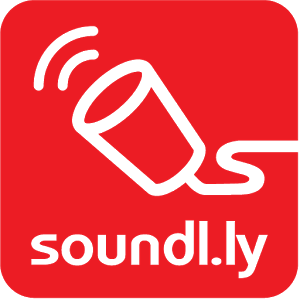Soundlly is using data-filled tones to stream additional content to mobile devices.
Let me start this post off by saying that “Soundlly” is not a typo, no matter what spell-check / auto-correct says. Instead, Soundlly is the name of a company in Seoul, South Korea, which has developed a technology that uses sounds at low volume to deliver bonus television content to your cellphone or tablet. So there.
Anyway, I always liked the Shazam app. I thought it was a great way to learn more about songs that caught my attention. I know there was (and may still be) a big push to use Shazam as part of TV ads and movie trailers, etc., but I don’t think I used it for anything other than learning who was singing what song. When Shazam became available through Siri (“Who is this singing?”) I deleted the app, but love the idea. Now comes a new concept – sounds at low volume used to deliver bonus television content to a cellphone or tablet.
“Imagine that you’re watching a travel program and your phone instantly receives the exact location, booking details and nearby attractions of the place you see,” says Tae Hyun Kim of Soundlly. The system uses the TV’s speakers to play data-filled tones alongside whatever you are watching. You won’t notice a difference, but the microphone on your smartphone will, picking up additional content streamed alongside the main event. “This can make television interactive,” says Tae. This use of ultrasound is already possible, but the volume levels break broadcasting rules and can irritate people or animals. “The real advantage of our system is that its noise level is the same as a quiet library,” says Tae.
From a technology perspective, Soundlly is easy to implement because it’s all software. Just integrate the Soundlly SDK in your app to easily build a second screen service. They provide a full software package to send a sound beacon through any speakers that can be detected by a mobile device. From an advertising perspective, we’re all looking for ways to extend brand equity onto the second screen to drive engagement and this may be a good way to achieve it. As I mentioned earlier, I know some brands put the Shazam logo in the corner of their ads (and may still do), but that relies on listening and connectivity to an outside source. I used to watch DaVinci’s Demons on cable and they had a companion app to the show that was really good. It would give additional information about the historical setting of the show and you could learn more about characters, etc. It was a great app except that it was timed like a rehearsed slide show. You pressed “start” on the app at the beginning of the show and they ran side-by-side. Of course, the minute I paused the show or closed the app, I lost the benefit of the app.
The current trend in second-screen engagement seems to be real-time interaction on social media. I know this can happen organically, but some shows, like The Blacklist on NBC, push this engagement with directed hashtags and fan interaction during the broadcast (I’m guilty of this, by the way – as a fan – not because they are a client). Anyway, delivering data via this type of stream would ensure timely and relevant content to an engaged audience. This type of technology would be a great way to deliver unique content, coupons, engage users (such as live voting) or retargeting. Even better, this technology is already available and being used by brands in Korea, which means there is (or will be) some data available to justify the addition of this SDK on behalf of clients.
I know that it’s really, really hard to break onto the second screen, but I think this type of technology is a great fit for QVC or any type of cooking program. The ability for an app to interact through any broadcast and deliver a call to action in real-time (or later) is a powerful tool for agencies and certainly worth exploring further. Check them out for yourself at http://www.soundl.ly.
PS – I put their URL to prove that I have not been spelling their name incorrectly. Furthermore, I just think the technology is clever – I have no stake or ties to this company – but would like to.
A STEM (Science / Technology / Engineering / Math) graduate and COO of bloomfield knoble, Thomas exemplifies the view that advertising is becoming an engineering discipline. He leads the integrated insights and strategic planning group in a way consistent with bloomfield knoble’s goal of bringing a strong analytical foundation to uncover fresh and innovative insights and business opportunities.

